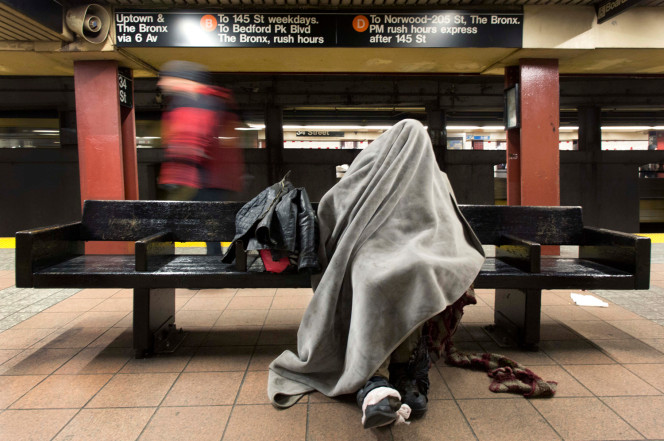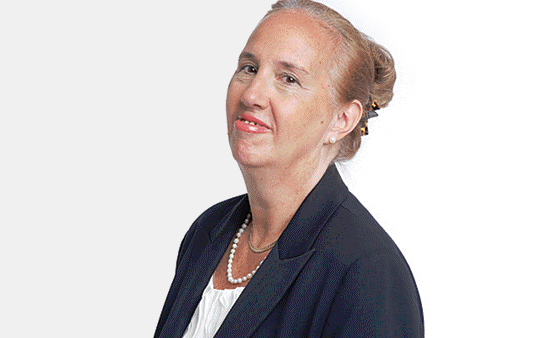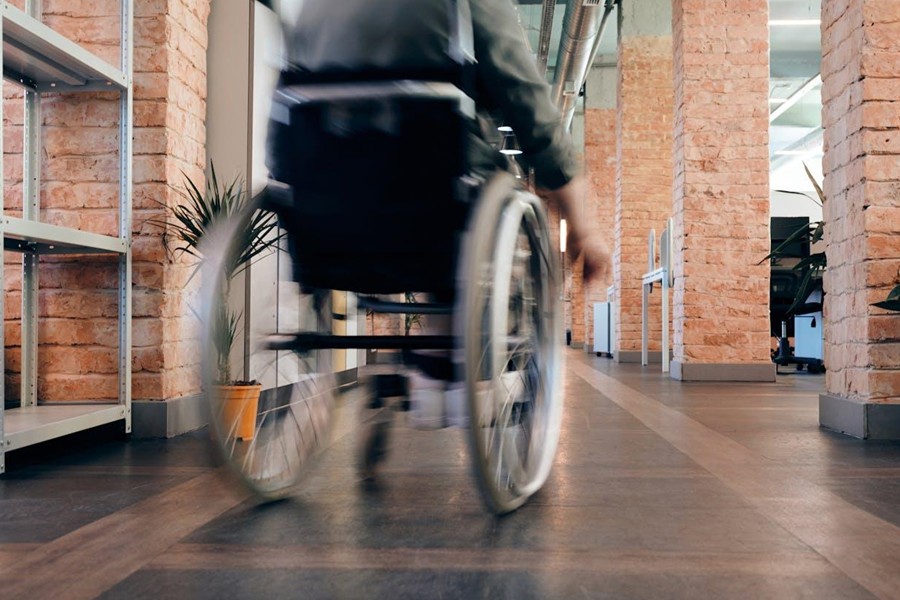 The de Blasio Administration today announced a pilot initiative to support people experiencing unsheltered homelessness on the subway by offering alternative pathways off the streets into transitional and permanent housing. The New York City Police Department, in partnership with the Mayor’s Office of Criminal Justice, the City’s Department of Homeless Services, the Manhattan District Attorney’s Office, and New York City Transit will enhance their close coordination with HOME-STAT outreach teams by providing new options to individuals they encounter in the subway system, diverting individuals from the criminal justice system towards outreach services and supportive programs.
The de Blasio Administration today announced a pilot initiative to support people experiencing unsheltered homelessness on the subway by offering alternative pathways off the streets into transitional and permanent housing. The New York City Police Department, in partnership with the Mayor’s Office of Criminal Justice, the City’s Department of Homeless Services, the Manhattan District Attorney’s Office, and New York City Transit will enhance their close coordination with HOME-STAT outreach teams by providing new options to individuals they encounter in the subway system, diverting individuals from the criminal justice system towards outreach services and supportive programs.
“New Yorkers want homeless people in the subway to receive the right interventions that will help them get back on their feet. Subjecting these individuals to criminal justice involvement for low level, non-violent offenses is not the answer and does not help anyone,” said Mayor Bill de Blasio. “This initiative strikes the right balance, and we are excited to give it a try as we expand approaches to prevent and address homelessness.”
Through the Subway Diversion Project, individuals experiencing unsheltered homelessness (i.e. having no active legal address at the time of engagement and not residing in shelter) encountered by the NYPD in the transit system (i.e. subway cars and subway stations) in Manhattan and observed to be in violation of New York City Transit Code of Conduct rules, such as fare evasion and lying outstretched, will be offered referrals to services in lieu of civil summonses. The program will begin on July 1st. Participants who opt into the program will complete an assessment with an outreach team, receive a referral to shelter and/or other services, and have their summonses cleared in coordination with the Metropolitan Transportation Authority, ultimately diverting them towards shelter away from unnecessary formal court processes and helping more people come inside and out of the subways. Any incidents of violent crime will still result in arrest and strong enforcement
“The NYPD works continuously with our partners – such as the MTA, the Manhattan District Attorney’s office, DHS, and the Bowery Residents’ Committee (BRC) – to connect those in need with critical services, and to improve quality of life and safety on the subways and across the city,” said NYPD Commissioner James O’Neill. “These partnerships include innovative solutions like this one to strike a sensible balance and to deliver real results for New Yorkers.”
“As the City continues to lighten the touch of enforcement on low-level offenses and build the fairest possible justice system, we are thankful for this partnership with the Bowery Residents’ Committee, the Manhattan District Attorney’s Office and City agencies to help ensure people experiencing homelessness have ample access to resources and supports that best address their needs,” said Mayor’s Office of Criminal Justice Director Elizabeth Glazer
“Our Office is proud to continue investing in structural reforms that keep New Yorkers out of the justice system and provide more meaningful interventions instead. Unsheltered people living in the subway need services – not arrests and court appearances for technical violations of transit rules,” said Manhattan District Attorney Cy Vance. “I thank Mayor de Blasio, the NYPD, and the Bowery Residents Committee for their innovation and collaboration on this potentially life-altering pilot program.”
“Our City is focused on continually finding new ways to reach New Yorkers in need where they are and encourage them to accept services,” said Department of Social Services Commissioner Steven Banks. “In partnership with the NYPD, our HOME-STAT outreach teams continue to bring creative ideas and interventions to the table to build on our progress transitioning more than 2,200 people off the streets and subways and into shelter and housing. Diverting individuals from criminal justice system involvement while helping them come out of the subways and into shelter and housing programs is a win for everyone.”
“As we address the citywide challenge of homelessness, our HOME-STAT outreach providers continue to innovate with new approaches and enhance partnerships, offering those we serve alternative pathways back to housing permanency,” said Department of Homeless Services Administrator Joslyn Carter. “Working closely with the NYPD, MOCJ, and Manhattan DA’s office, we’re bringing our experience and expertise to the table to help connect unsheltered New Yorkers to services and supports as they get back on their feet, instead of burdening them with unnecessary court processes and summonses, which can make it harder to regain stability. We’re proud to be part of this progressive partnership and look forward to continuing to build on our collaborations.”
“BRC is proud to have this opportunity to enhance our great partnership with NYC DHS and the NYPD, undertaking this pioneering and necessary effort that recognizes that the solution to homelessness is not to criminalize the victim but to guide them toward the help they need,” said BRC CEO Muzzy Rosenblatt.
NYPD Engagement – Throughout their regular tours of duty, when NYPD Transit officers encounter people experiencing unsheltered homelessness on the subway committing Transit Code violations, rather than arrest these individuals and serve them with a civil summons, officers will complete an initial review to determine the individual’s housing status and eligibility for participation in the Subway Diversion Project.
NYPD Referral and HOME-STAT Outreach Assessment – If deemed eligible, the NYPD officer will offer individual participation in the diversion program in lieu of a civil summons. Individuals who choose to participate in the project will be escorted to one of four Manhattan district offices where not-for-profit social service and HOME-STAT outreach provider BRC will complete an assessment to determine their housing, employment, medical, and substance use and mental health treatment histories. BRC outreach teams will be available 24/7/365 for referral calls.
Diversion to Services – Any individual who agrees to participate in the diversion program will give their summons to the BRC outreach team, who will coordinate with the MTA and the NYPD to clear the summons.
Placement and Follow-Up – Following the assessment and concurrent with the diversion confirmation, the team will discuss possible short-term and long-term referral options with the client, drawing on their experience utilizing harm reduction models and other evidence-based practices to inform services offered to diversion program participants. Depending on the results of the assessment, the BRC outreach team will offer the client a referral to appropriate placement at one of the following locations:
- Medical and Non-Medical Detox Placements
- Dedicated overnight and Safe Haven beds
- Drop-In Services
- NYC Shelter Intake
- Referral Appointment for BRC Drop-In Office Hours
These practices will form the backbone of the diversion program, creating an effective structure for removing barriers to service and respecting each client’s individual level of readiness for change. BRC’s approach to outreach as part of the City’s HOME-STAT program provides a brief restorative intervention to deflect participants away from the formal court process. The pilot’s impact will be analyzed by MOCJ in partnership with the NYPD, DHS and BRC and evaluated for expansion.
Building on Unprecedented Investments and Interventions – Since 2014, the City has redoubled outreach efforts, dedicating unprecedented new resources to street outreach programs and providers:
- Helping more than 2,200 individuals off the streets and out of the subways and into transitional and permanent settings since the launch of HOME-STAT in April 2016.
- More than doubling the City’s investment in street homeless programs, increasing by more than from approximately $45M in 2013 to approximately $126M today.
- More than doubling the number of outreach staff canvassing the streets and subways engaging New Yorkers 24/7/365 since 2014, from 191 to nearly 400, with those dedicated staff spending months building relationships by making regular contact with street homeless New Yorkers to build trust and encourage them to accept services and transition off the streets.
- On our way to tripling the number of emergency ‘safe haven’ and ‘stabilization’ beds dedicated to serving street homeless New Yorkers citywide since 2014, with hundreds of beds opened during this Administration and hundreds more set to open in the coming years, ultimately increasing the operating total from roughly 600 beds to nearly 1,800 beds. Taken together with an additional roughly 350 respite beds, there will be 2,100 beds dedicated to serving street homeless individuals available to HOME-STAT outreach teams citywide.
- Building the City’s first-ever by-name list of individuals known to be homeless and residing on the streets and in the subways to improve the delivery of services, with outreach teams now knowing approximately 1,700 street homeless individuals by name and actively engaging another 2,200 individuals encountered on the streets to determine whether they are homeless.
- Increasing joint outreach operations to engage more New Yorkers and offer more supports, including expanding joint outreach operations with NYPD in Midtown, Manhattan to seven days per week, and enhancing coordination with the NYPD and MTA on the subways to provide alternative pathways to permanence.
New Yorkers who see individuals they believe to be homeless and in need of assistance should contact 3-1-1 via phone or mobile app and request outreach assistance for the most immediate response.

“Homeless seeking shelter in the subway system is a worsening crisis that everyone can see,” said Manhattan Borough President Gale A. Brewer (pictured). “I thank Mayor de Blasio for working to find a solution to support these New Yorkers by offering them safe pathways out of the transit system and into transitional housing.”
“Being homeless is not a crime, and sadly the homeless population has not declined in New York City,” said State Senator Roxanne J. Persaud, Chair of the Senate Social Services Committee. “I commend the Mayor’s initiative on combating this growing crisis by offering support rather than summonses to those without shelter, who are clearly in need of help. It is my hope that the Subway Diversion Demonstration Project is successful in Manhattan so that it can be expanded to the other boroughs, where homeless citizens may also benefit.”
“Excessive fines do nothing to help unsheltered individuals in our subway system access housing. The Subway Diversion Demonstration Project signals an important shift in strategy from punishment to a more compassionate response by linking needy individuals to vital services,” said Assembly Member David I. Weprin. “I thank Mayor Bill de Blasio, NYPD Commissioner James P. O’Neil, and Manhattan District Attorney Cyrus R. Vance Jr. for their collaborative efforts on this issue and I look forward to the day the program is expanded citywide.”
“No one should go to jail for being homeless— but for too long our summons system has forced people into the carceral system for not having adequate access to housing. We need social services, not jail, and I’m proud to support measures that provide more transitional housing and connect people to the care they deserve,” said Council Member Stephen Levin.
“This pilot program is important on so many fronts,” said Fortune Society President and CEO JoAnne Page. “The effort recognizes that homelessness should not be criminalized and is not effectively addressed through summonses and arrests. Issuing a civil summons to a person experiencing homelessness would, in all likelihood and in a short period of time, create more barriers to stability. Diverting vulnerable and disadvantaged people away from the justice system by providing critically needed services – like shelter, substance treatment, and mental health programs – is a smart, public health approach that will yield effective, long-term results. We welcome this partnership between the Manhattan DA’s office, NYPD and DHS as it tries to address the root causes of homelessness. The Fortune Society will support this project in any way we can and we look forward to its expansion beyond Manhattan.”
“The Osborne Association commends the Mayor’s Office for working with Manhattan DA Cyrus Vance, NYPD, and the Department of Homeless Services to pilot an alternative pathway for individuals experiencing homelessness who are also in violation of the NYC Transit Code of Conduct,” said Osborne President and CEO Liz Gaynes. “Not having a home is not a crime, but time and again people who are seeking shelter find themselves at odds with transit policies and, often, the law. As a service provider at every stage of the legal system for nearly nine decades, Osborne has long seen the value in diversion and substantive alternatives to the criminal justice system. By offering people experiencing homelessness an assessment and referral to services in lieu of a summons, the Diversion Demonstration Project should further reduce people’s contact with our legal system and offer supportive services and a connection to housing.”
Photo credit: 1) Homeless person on subway platform. By Walter Rutledge. 2) Gale Brewer by Gale Brewer.
Become a Harlem Insider!
By submitting this form, you are consenting to receive marketing emails from: Harlem World Magazine, 2521 1/2 west 42nd street, Los Angeles, CA, 90008, https://www.harlemworldmagazine.com. You can revoke your consent to receive emails at any time by using the SafeUnsubscribe® link, found at the bottom of every email. Emails are serviced by Constant Contact








